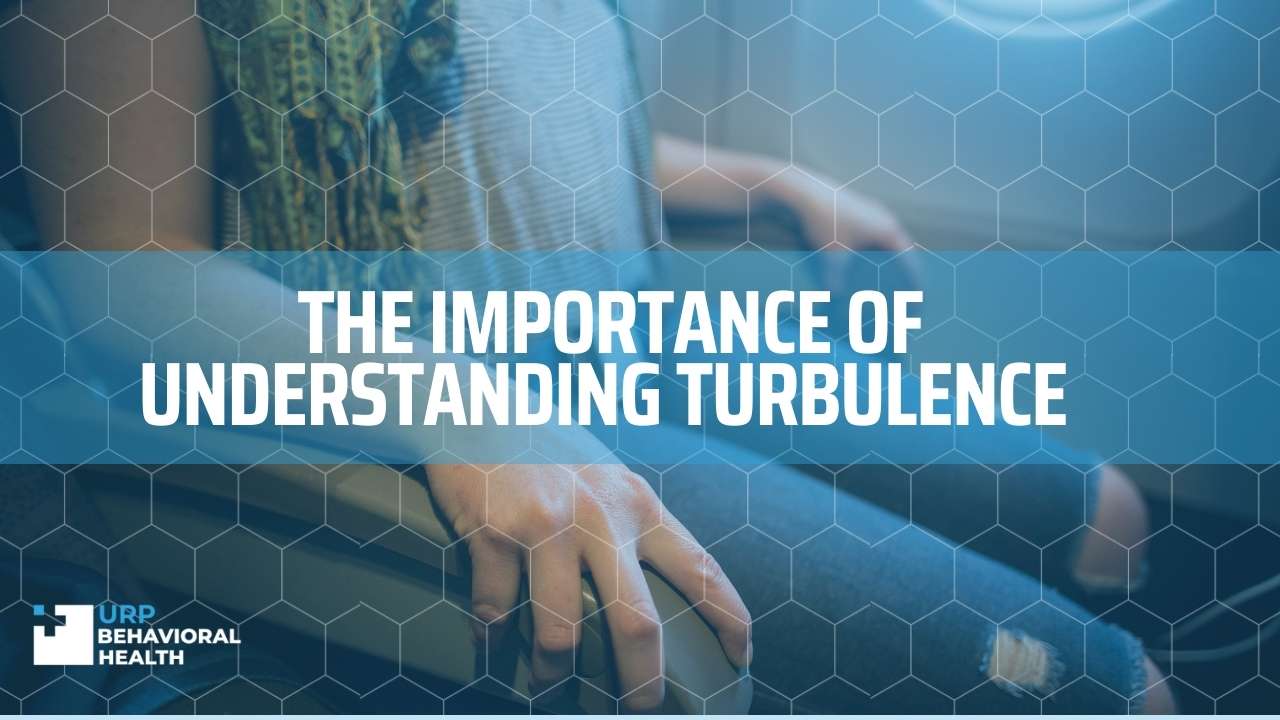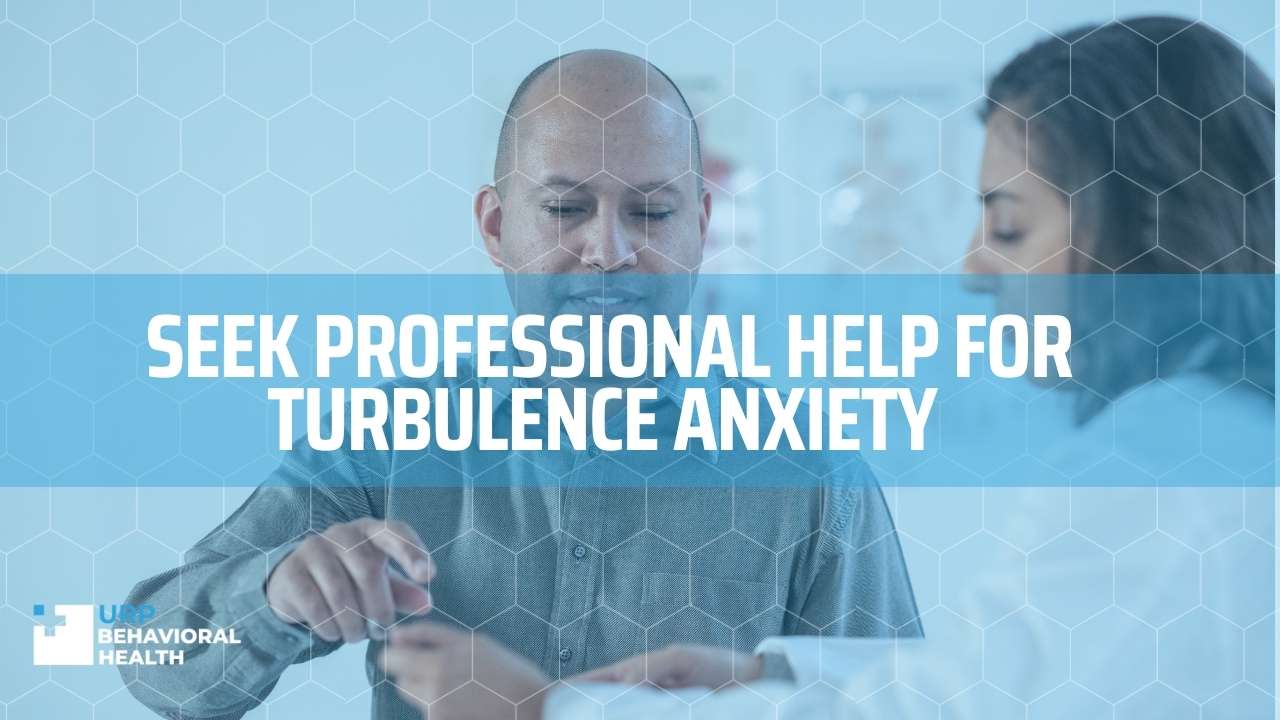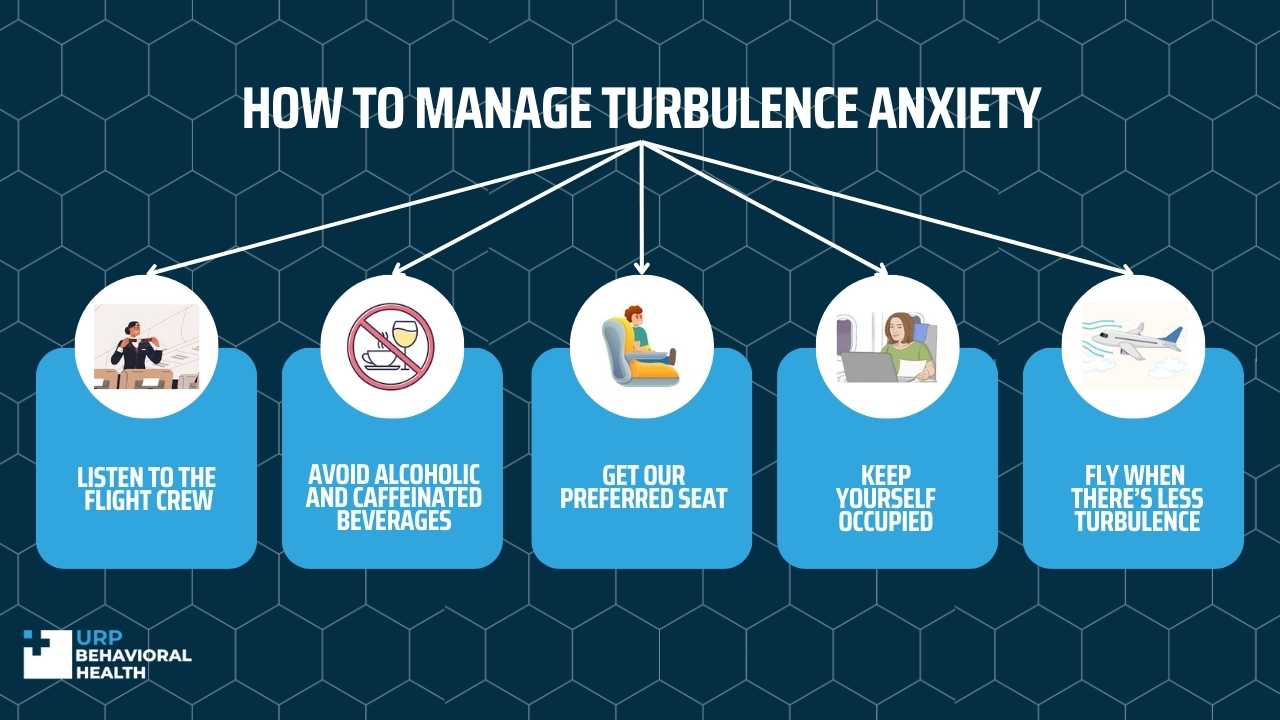
How To Deal With Turbulence Anxiety
We all get a little nervous during a not-so-smooth flight, but when you get so worried that it keeps you from functioning, it’s more than nervousness. It’s turbulence anxiety. Turbulence is a normal part of flying and happens pretty often, but that doesn’t make it any less scary. Studies indicate that it’s one of the biggest reasons [1] for anxiety among fliers.
In fact, it’s common for some passengers to catastrophize turbulence by thinking that the plane is crashing. If you’re one of the people who gets overly anxious when the plane runs into some turbulence, there are a few techniques you can use to stay calm.

The Importance of Understanding Turbulence
When flight turbulence is the source of your anxiety, experts recommend understanding the feared situation. Educating yourself about turbulence and how it occurs can help tone down your anxiety levels so you have a more controlled response when it occurs during a flight. So, where do you start?
Let’s start with turbulence itself. It’s when the air around the plane changes suddenly, causing it to rock or, in some cases, drop. Planes have to maintain a consistent speed, so when they face a sudden change in resistance, such as a sudden gust of wind or shift in the wind’s direction, the plane’s speed changes. This causes it to jolt, rock, slow down, or lurch forward.
How Dangerous Is Turbulence?
Let’s get to what you really want to know: is turbulence dangerous? And if it is, how dangerous is it? While turbulence did cause structural damage to planes at one point, aircraft engineering has made many innovative changes since then.
In fact, many aircraft today are equipped with technology that corrects the plane’s movement if it’s disturbed. And they’re also built to be much more durable, so they can withstand turbulence. Now, you’re probably wondering, ‘what if the turbulence is really bad?’
When the weather is deemed unsafe for flying, airlines simply cancel a flight so the aircraft takes off when conditions improve. In the event of a weather-related emergency, the plane is diverted to the closest airport to avoid flying in risky conditions. To put it simply, airlines and aircraft have various measures in place to keep passengers safe.
Can Turbulence Cause a Plane Crash?
One of the major reasons people feel anxious on a flight is that they associate turbulence with the plane going down. The chances of this happening are pretty low. At most, sudden turbulence may cause you to hit your head if you don’t buckle up. Or, the doors to overhead compartments may open, causing luggage to fall and cause injuries. Although these scenarios are pretty rare, you can avoid them by keeping your seatbelt on throughout the flight and not booking an aisle seat.

Relaxation Techniques for Turbulence Anxiety
There are some situations when you can curb your anxiety and panic by leaving the environment – being on a plane is not one of them. So, if there’s a chance that a flight may get a little bumpy, you need to find ways to calm yourself down. Next time you’re anxious on a bumpy flight, here are a few relaxation techniques to help calm your nerves.
Progressive Muscle Relaxation
Stress can make your muscles tense up, which in turn signals to the brain that you’re stressed. Practicing progressive muscle relaxation is meant to reduce muscle tension and break this cycle. In this technique, you consciously bring tension in each muscle and relax it until each part of your body relaxes. Repeat this step until you’ve covered your entire body.
Deep Breathing
When you’re anxious, it activates the area of your brain that regulates your fight or flight response, the sympathetic nervous system. Practicing deep breathing does the opposite by activating the part that’s responsible for rest and relaxation, your parasympathetic nervous system.
Though there are plenty of methods you can practice, the 4-7-8 method is a good place to start. Inhale for 4 seconds, hold it for 7 seconds, and exhale for 8 seconds.

Seek Professional Help for Turbulence Anxiety
If you’re anticipating an upcoming flight and are worried about turbulence, then it’s recommended to seek professional help beforehand. A mental health practitioner can use evidence-based strategies to address your anxious thoughts. And if needed, they may prescribe medication to calm your feelings of anxiety.
Psychotherapy
Talk therapy is the first line of treatment in any case involving anxiety. It involves talking to you about your anxious thoughts and changing them. The most common approach in this case is CBT, which is founded on the notion that your thoughts and how they make you feel influence your behavior.
With CBT, your practitioner will use a combination of techniques like coping skills, psychoeducation, and cognitive restructuring to help you stay calm.
Medication
If you struggle with intense anxiety and you think that you may need medication to manage it while on the flight, speak to your mental health practitioner. In this case, it’s possible that they may prescribe medication that can help you stay calm.
Usually, mental health professionals prescribe anti-depressants to target anxiety symptoms, out of which selective serotonin reuptake inhibitors (SSRIs) are the most common. These formulations work by regulating serotonin levels in the brain, which influences your mood and memory.
Regardless of how the approach your mental health practitioner uses, this process takes time. So, if you’re expecting to fly on a certain date, makes sure to consult a specialist a few months in advance. In the event that you need medication, remember that it takes time to find a formulation that suits you. Similarly, psychotherapy requires a few weeks of consistent treatment before you start seeing results.

How To Get Over Turbulence Anxiety?
While educating yourself about turbulence and its effects is a great way to counter your anxiety, you’ll still feel anxious on the flight. After all, turbulence is becoming more and more likely as the atmosphere grows warmer [2]. Here are a few other ways to manage your anxiety and stay calm on a not-so-smooth flight.
Listen To The Flight Crew
Your pilot and flight crew members go through extensive training to ensure that passengers stay safe. They experience turbulence on a regular basis and are aware of appropriate measures to handle it and stay safe. If you’re anxious, don’t hesitate to ask questions or express your concerns.
Avoid Alcoholic and Caffeinated Beverages
When the flight gets a little rocky, it can be tempting to reach for another glass of wine. But remember that having too much alcohol can contribute to dehydration and nausea. When paired with anxiety, this makes for a bad combination. It’s also recommended to skip caffeinated beverages since caffeine can worsen anxiety symptoms. Instead, keep yourself hydrated and try staying calm.
Get Your Preferred Seat
If you know that you get turbulence anxiety, then it’s best to prepare in advance by booking the right seat. Some seats experience less turbulence than others, and these are positioned either toward the front or over the wings.
The front experiences a lower impact of turbulence because it’s beyond the aircraft’s center of gravity, while the area near the wings remains more stable because of the wings’ shock-absorbing qualities.
Keep Yourself Occupied
Check out the in-flight entertainment, whether it’s music, games, or movies, to keep you distracted. Focusing on other activities will help you keep your mind off turbulence — if it occurs. You can also bring along a pair of noise-canceling headphones to keep your mind off plane sounds and create a relaxing environment. This can help you immerse yourself in a book, crossword puzzle, or anything else.
Fly When There’s Less Turbulence
Besides booking specific seats, there are also times when you can fly to avoid turbulence. Experts recommend flying early in the morning to avoid turbulence. This is thanks to slow wind speeds and cooler temperatures.
Don’t wait - confidential help is available right now for you or your loved one.
Types of Turbulence
Lastly, it’s also helpful to understand the types of turbulence that can affect your flight. The type can vary depending on what’s causing it:
- Clear Air Turbulence occurs upon suddenly entering cloudless regions, causing strong wind shears in the jet stream
- Thermal Turbulence: this occurs when the surface heats up and cold air moves over warmer ground. It happens because the convection currents rise from the surface, mixing with the air over the surface.
- Mechanical Turbulence: This is when the airflow over irregular terrain, like large mountains or buildings, is disturbed. This creates eddies, causing turbulence at low altitudes.
- Mountain Wave Turbulence: It occurs when strong winds blowing in a perpendicular direction to the mountains move upwards.
But regardless of the type of turbulence you experience on your flight, it’s best to keep your seatbelts buckled, listen to the flight crew, and follow the airline’s carry-on restrictions to make sure you stay safe.
Conclusion
To sum it up, turbulence is a common occurrence that you can expect on just about any flight. It occurs due to a number of reasons and is no indication that passengers are in immediate danger. Most modern aircraft are built with technology that allows the structure to remain stable despite experiencing turbulence. Understanding this is key to addressing turbulence anxiety. Other than that, you can practice relaxation strategies such as deep breathing and progressive muscle relaxation when your feel anxious during your flight. It’s also recommended to listen to your flight crew, book an early morning flight, and choose seats that experience less turbulence.
Contact our admissions team now to begin your path toward a brighter future.

References:
- Flight Anxiety Reported from 1986 to 2015 – PubMed. Link: https://pubmed.ncbi.nlm.nih.gov/30922426/
- Evidence for Large Increases in Clear-Air Turbulence Over the Past Four Decades. Link: https://agupubs.onlinelibrary.wiley.com/doi/10.1029/2023GL103814
















